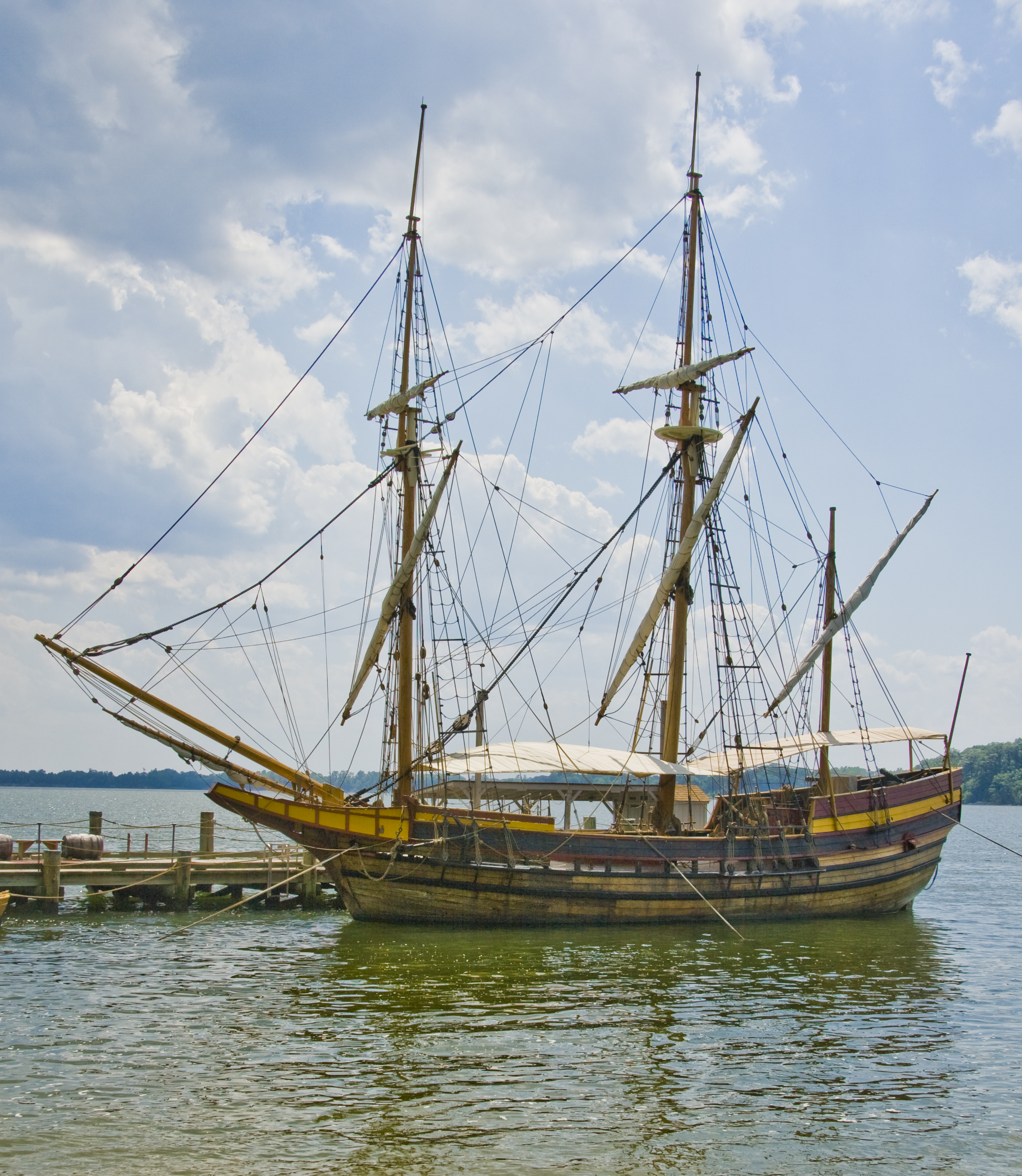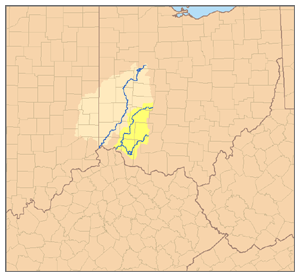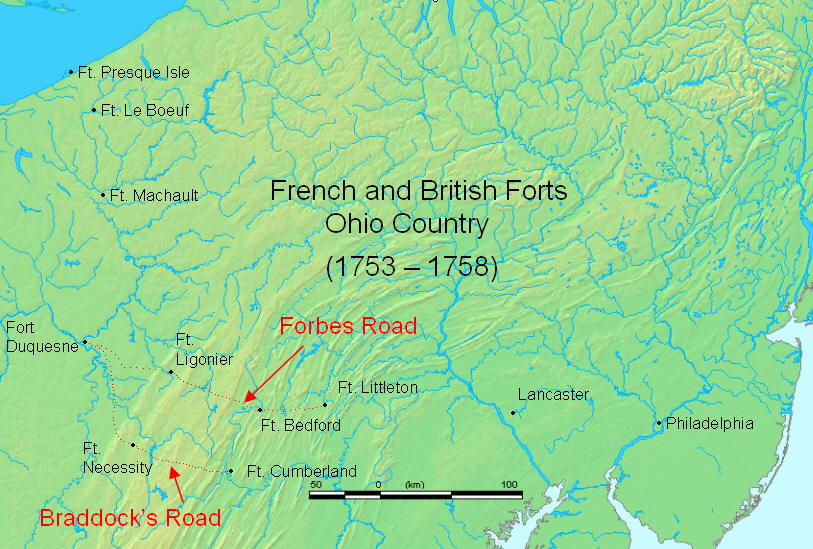|
Jane Frazier
Jane Frazier or Fraser was a woman captured by Native Americans in the 18th century. She lived in a log house built in 1754 just beyond the Cumberland, Province of Maryland city limits. On October 1, 1755, while returning to her home from the Fort Cumberland Trading Post several miles away, Jane was captured by Native Americans and taken to the Miami River in Ohio. She escaped and returned 18 months later to learn that her husband John had remarried because he thought that she was dead. Jane’s husband took her back and sent his second wife home to her father. Ruby Frazier Frey, a descendant, wrote a book called ''Red Morning'' telling of Jane’s experiences. The Frazier house was destroyed in the 1960s, but a marker designates its location. The former Jane Frazier house was on Route 51, Cumberland, Maryland. Jane Frazier (formerly Jane Bell and Jane McClain) was born January 1, 1735, in Winchester, Virginia, and died April 14, 1815, in Schellsburg, (Bedford Co.) Pennsylvania ... [...More Info...] [...Related Items...] OR: [Wikipedia] [Google] [Baidu] |
Cumberland, Maryland
Cumberland is a U.S. city in and the county seat of Allegany County, Maryland. It is the primary city of the Cumberland, MD-WV Metropolitan Statistical Area. At the 2020 census, the city had a population of 19,076. Located on the Potomac River, Cumberland is a regional business and commercial center for Western Maryland and the Potomac Highlands of West Virginia. Historically Cumberland was known as the "Queen City", as it was once the second largest in the state. Because of its strategic location on what became known as the Cumberland Road through the Appalachians, after the American Revolution it served as a historical outfitting and staging point for westward emigrant trail migrations throughout the first half of the 1800s. In this role, it supported the settlement of the Ohio Country and the lands in that latitude of the Louisiana Purchase. It also became an industrial center, served by major roads, railroads, and the Chesapeake and Ohio Canal, which connected Cumberland to ... [...More Info...] [...Related Items...] OR: [Wikipedia] [Google] [Baidu] |
Province Of Maryland
The Province of Maryland was an English and later British colony in North America that existed from 1632 until 1776, when it joined the other twelve of the Thirteen Colonies in rebellion against Great Britain and became the U.S. state of Maryland. Its first settlement and capital was St. Mary's City, in the southern end of St. Mary's County, which is a peninsula in the Chesapeake Bay and is also bordered by four tidal rivers. The province began as a proprietary colony of the English Lord Baltimore, who wished to create a haven for English Catholics in the New World at the time of the European wars of religion. Although Maryland was an early pioneer of religious toleration in the English colonies, religious strife among Anglicans, Puritans, Catholics, and Quakers was common in the early years, and Puritan rebels briefly seized control of the province. In 1689, the year following the Glorious Revolution, John Coode led a rebellion that removed Lord Baltimore, a Catholic, fro ... [...More Info...] [...Related Items...] OR: [Wikipedia] [Google] [Baidu] |
Fort Cumberland (Maryland)
380px, ''Fort Cumberland, 1755'' (1878) Fort Cumberland (built 1754) was an 18th-century frontier fort at the current site of Cumberland, Maryland, USA. It was an important military and economic center during the French and Indian War (1754–63) and figured significantly in the early career of George Washington. History At the current location of the city of Cumberland, Maryland, a crude frontier fort was constructed at the confluence of Wills Creek and the Potomac River in fall 1754 by troops of the Maryland militia, under the command of Captain John Dagworthy, and under the overall command of Colonel James Innes, the commander-in-chief of colonial forces at that time. A few years earlier, Thomas Cresap had established a trading post nearby, and hired Native Americans including the local chief Nemacolin to blaze a shorter path across the Allegheny Mountains to Redstone Creek on the Monongahela River, which became known as Nemacolin's Path. Initially named Fort Mount Pleasan ... [...More Info...] [...Related Items...] OR: [Wikipedia] [Google] [Baidu] |
Great Miami River
The Great Miami River (also called the Miami River) (Shawnee: ''Msimiyamithiipi'') is a tributary of the Ohio River, approximately long,U.S. Geological Survey. National Hydrography Dataset high-resolution flowline dataThe National Map , accessed May 19, 2011 in southwestern Ohio and Indiana in the United States. The Great Miami originates at the man-made Indian Lake and flows south through the cities of Sidney, Piqua, Troy, Dayton, Middletown and Hamilton. The river is named for the Miami, an Algonquian-speaking Native American people who lived in the region during the early days of European settlement. They were forced to relocate to the west to escape pressure from European-American settlers. The region surrounding the Great Miami River is known as the Miami Valley. This term is used in the upper portions of the valley as a moniker for the economic-cultural region centered primarily on the Greater Dayton area. As the lower portions of the Miami Valley fall under the i ... [...More Info...] [...Related Items...] OR: [Wikipedia] [Google] [Baidu] |
John Fraser (frontiersman)
John Fraser (1721 – 16 April 1773) was a fur trader licensed by the Province of Pennsylvania for its western frontier, an interpreter with Native Americans, a gunsmith, a guide and lieutenant in the British army, and a land speculator. He served in several of England's expeditions against the French and their allies in the vicinity of Fort Duquesne and later Fort Pitt. Born in the Scottish Highlands, Fraser, age 14, arrived in Pennsylvania and settled for a short time near the Susquehanna River in Dauphin County. He next moved west over the Allegheny Mountains to establish an English trading post at the Native American village of Venango (now Franklin, Pennsylvania), at the junction of French Creek and the Allegheny River. For some ten years there he bartered his gunsmith services, English manufactured goods, and alcohol, in exchange for Indian pelts and furs. In 1749 French expeditionary activity led by Pierre Joseph Céloron de Blainville forced Fraser to abandon Venang ... [...More Info...] [...Related Items...] OR: [Wikipedia] [Google] [Baidu] |
Winchester, Virginia
Winchester is the most north western independent city in the Commonwealth of Virginia. It is the county seat of Frederick County, although the two are separate jurisdictions. The Bureau of Economic Analysis combines the city of Winchester with surrounding Frederick County for statistical purposes. As of the 2020 census, the city's population was 28,120. Winchester is the principal city of the Winchester, Virginia–West Virginia, metropolitan statistical area, which is a part of the Baltimore–Washington metropolitan area. Winchester is home to Shenandoah University and the Museum of the Shenandoah Valley. History Native Americans Indigenous peoples lived along the waterways of present-day Virginia for thousands of years before European contact. Archeological, linguistic and anthropological studies have provided insights into their cultures. Though little is known of specific tribal movements before European contact, the Shenandoah Valley area, considered a sacred co ... [...More Info...] [...Related Items...] OR: [Wikipedia] [Google] [Baidu] |
Fort Bedford
Fort Bedford was a French and Indian War-era British military fortification located at the present site of Bedford, Pennsylvania. The fort was a star-shaped log fortress erected in the summer of 1758. Background Fort Bedford was constructed during the French and Indian War by British troops under the command of Colonel Henry Bouquet by order of General John Forbes. The fort was one of a string of British forts and blockhouses designed to protect British supply lines on the Forbes Road, a pioneer trail built by the British during their invasion of the Ohio Country and campaign against the French garrison at Fort Duquesne, modern day Pittsburgh. After General Edward Braddock's campaign to take the forks of the Ohio River ended in disaster, General Forbes was placed in command of a new expedition to capture the strategic point guarded by Fort Duquesne. Forbes vowed not to make the same mistakes as his predecessor. Braddock had led a small invasion force launched from western ... [...More Info...] [...Related Items...] OR: [Wikipedia] [Google] [Baidu] |
Edward C
Edward is an English given name. It is derived from the Anglo-Saxon name ''Ēadweard'', composed of the elements '' ēad'' "wealth, fortune; prosperous" and '' weard'' "guardian, protector”. History The name Edward was very popular in Anglo-Saxon England, but the rule of the Norman and Plantagenet dynasties had effectively ended its use amongst the upper classes. The popularity of the name was revived when Henry III named his firstborn son, the future Edward I, as part of his efforts to promote a cult around Edward the Confessor, for whom Henry had a deep admiration. Variant forms The name has been adopted in the Iberian peninsula since the 15th century, due to Edward, King of Portugal, whose mother was English. The Spanish/Portuguese forms of the name are Eduardo and Duarte. Other variant forms include French Édouard, Italian Edoardo and Odoardo, German, Dutch, Czech and Romanian Eduard and Scandinavian Edvard. Short forms include Ed, Eddy, Eddie, Ted, Teddy ... [...More Info...] [...Related Items...] OR: [Wikipedia] [Google] [Baidu] |
People From Cumberland, Maryland
A person ( : people) is a being that has certain capacities or attributes such as reason, morality, consciousness or self-consciousness, and being a part of a culturally established form of social relations such as kinship, ownership of property, or legal responsibility. The defining features of personhood and, consequently, what makes a person count as a person, differ widely among cultures and contexts. In addition to the question of personhood, of what makes a being count as a person to begin with, there are further questions about personal identity and self: both about what makes any particular person that particular person instead of another, and about what makes a person at one time the same person as they were or will be at another time despite any intervening changes. The plural form " people" is often used to refer to an entire nation or ethnic group (as in "a people"), and this was the original meaning of the word; it subsequently acquired its use as a plural f ... [...More Info...] [...Related Items...] OR: [Wikipedia] [Google] [Baidu] |
1735 Births
Events January–March * January 2 – Alexander Pope's poem '' Epistle to Dr Arbuthnot'' is published in London. * January 8 – George Frideric Handel's opera '' Ariodante'' is premièred at the Royal Opera House in Covent Garden, London. * February 3 – All 256 people on board the Dutch East India Company ships '' Vliegenthart'' and ''Anna Catherina'' die when the two ships sink in a gale off of the Netherlands coast. The wreckage of ''Vliegenthart'' remains undiscovered until 1981. * February 14 – The '' Order of St. Anna'' is established in Russia, in honor of the daughter of Peter the Great. * March 10 – The Russian Empire and Persia sign the Treaty of Ganja, with Russia ceding territories in the Caucasus mountains to Persia, and the two rivals forming a defensive alliance against the Ottoman Empire. * March 11 – Abraham Patras becomes the Governor-General of the Dutch East Indies (now Indonesia) upon the death of Dir ... [...More Info...] [...Related Items...] OR: [Wikipedia] [Google] [Baidu] |
1815 Deaths
Events January * January 2 Events Pre-1600 * 69 – The Roman legions in Germania Superior refuse to swear loyalty to Galba. They rebel and proclaim Vitellius as emperor. * 366 – The Alemanni cross the frozen Rhine in large numbers, invading the Roman Empi ... – Lord Byron marries Anna Isabella Milbanke in Seaham, county of Durham, England. * January 3 – Austrian Empire, Austria, United Kingdom, Britain, and Bourbon-restored France form a secret defensive alliance treaty against Prussia and Russia. * January 8 – Battle of New Orleans: American forces led by Andrew Jackson defeat British forces led by Sir Edward Pakenham. American forces suffer around 60 casualties and the British lose about 2,000 (the battle lasts for about 30 minutes). * January 13 – War of 1812: British troops capture Fort Peter in St. Marys, Georgia, the only battle of the war to take place in the state. * January 15 – War of 1812: Capture of USS Pr ... [...More Info...] [...Related Items...] OR: [Wikipedia] [Google] [Baidu] |






_1938.jpg)

